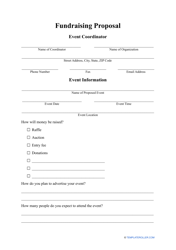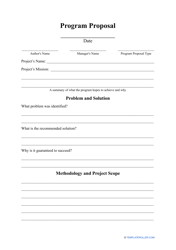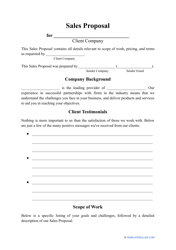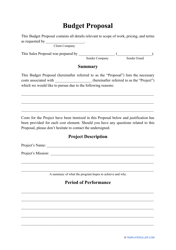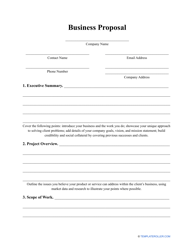How to Write a Proposal?

A business proposal is a sales document that is aimed at attracting potential partners that will buy the products or services your company offers. A proposal is usually proffered as either a digital presentation or a printed-out form and explains the products or services a business offers to provide in order to help solve their customer’s specific problem.
How to Write an Effective Proposal?
Plenty of marketers and sales teams make a handful of mistakes when it comes to writing a project proposal. In this article, we'll provide some proven tips for increasing your chances of success and give you a great ready-made proposal outline you can follow when drafting your document.
Make sure that you follow these tips when writing a proposal:
- Be concise. Less is always more when it comes to a work proposal. If you can make your point in fewer words, do so. Try to keep your sentences to less than 15 words and try to limit them to one main idea.
- Come up with an effective executive summary . Get straight to the point: describe how you will solve your client’s problem, what features make your business stand out, and how your proposal will benefit your client and provide an excellent solution.
- Utilize a reader-friendly design . The material you provide should be comprehensive and easy to read. Make use of white space, graphics, and charts to visualize your data. Use numbered lists (when the sequence of the facts you provide is important) and bullet points (when sequence and order don’t matter).
- Proofread your finished text . When you’re done, read your proposal aloud: this way you’ll be able to weed out any grammatical errors, illogical sentences, and useless repetition.
Parts of a Proposal
Your proposal will most likely be tailored to the demands of your specific industry. The document will include two main parts: a cover letter and the formal proposal itself.
The cover letter will contain an abbreviated summary of your business plan and will provide your credentials and contact information. The key parts of the proposal itself, regardless of the specific project at hand, include the following:
- An introduction . This part will provide an overview of the issue your client or investor is looking to solve.
- The proposed solution . A step-by-step plan that you will implement in order to overcome the client’s problem and the specific benefits your business can bring to the table.
- Your qualifications . The experience and specific deliverables that you and your company can provide and a list of any third-party contractors or suppliers required for completing the job.
- Budget breakdown . This part will go deep into the balance between the costs and benefits and should provide additional confirmation of the unique value of your proposal.
- Appendices and addendums . Most of the data-heavy charts, tables, maps, and graphs should be attached to the proposal as separate pages at the very end of the text.
How to Write a Professional Proposal?
Make sure you have identified and researched your client before compiling your proposal. This will influence the numbers you put forward and the language you will be using throughout your document. Clearly define the problem you will solve for your client and define the proposed solution.
Follow a proposal format to make sure that every document you send is effective, professional, and complete:
- Start with an interactive table of contents for ease of navigation.
- Open with an appealing executive statement.
- Utilize headings and make sure to number all key points.
- Deliver the contents of your business plan convincingly and assertively.
- Present a well-researched breakdown of costs.
- Include specific deliverables and a timeline of key milestones.
How to Format a Proposal?
Proposals are relatively flexible when it comes to formatting. You can choose any design scheme, as long as it's professional, sleek, and industry-appropriate.
The table of contents should list all of the parts of your document and provide embedded links to make skipping to a certain section easier. Avoid cluttered pages and walls of text so as to not overwhelm your reader. Break larger paragraphs into smaller ones, organize bulky information with the use of lists and tables, and follow a set scheme when it comes to spacing and font size.
The images and graphics you use should never distract the reader from the points you are trying to make. Consider implementing a style guide for all of your proposals to follow: developing a consistent style and recognizable aesthetic will help your brand in the long run.
How to Make a Proposal?
A project proposal can be either solicited or unsolicited. Solicited proposals can be further divided into “informally solicited” and “formally solicited.” Both of these imply that a customer has put forward a request (either verbally or in writing) and would like you to propose a solution to their problem.
An unsolicited proposal is similar to a cold email. After acquiring a list of potential clients within a specific industry, a company may reach out with a standardized proposal offering their goods or services.
Whether the proposal is solicited or is sent as a cold email, there are certain steps you can take to raise your chances of success:
- Your document must include as much useful information as possible;
- Any proposals you send out must be well-researched and client-specific;
- Act fast. Moving quickly will show the client that you’re passionate about the work you do and might just help you secure the gig.
Once the proposal is accepted, you will need to come up with a contract for services and compile a series of invoices for your client. Consider using pre-made templates to ensure that the process is as fast and as seamless as possible.
How to Write a Request for Proposal?
A request for a proposal - or RFP for short - lists the client’s requirements and is the document that your proposal should directly respond to. Here’s what you need to write a compelling RFP.
- Clearly define the needs of your company and the requirements of the project the vendors will be bidding on.
- Provide a list of requirements the vendors will need to satisfy in order to be eligible to work with you.
- Outline the criteria you will follow for selecting a vendor.
- Specify your budget, timeline, and the deliverables you will be expecting.
Writing a good RFP increases the probability of securing the goods or services that the company needs. It helps attract quality contractors and minimizes the time it will take to complete the project.
Related Topics:

